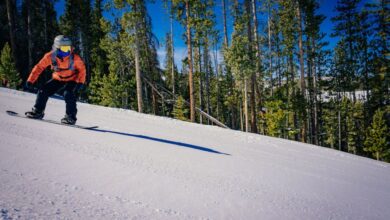How Do You Plan a Visit to a National Park
Visiting a national park can be one of the most enriching experiences for nature lovers and adventure seekers alike. The sheer beauty of untouched landscapes, wildlife encounters, and the chance to disconnect from everyday life can create unforgettable memories. However, to ensure a smooth and enjoyable trip, it’s essential to plan ahead. Here’s how to prepare for your national park adventure.
Research the Park
The first step in planning your visit is to research the national park you intend to explore. Each park offers unique landscapes, ecosystems, and activities. Are you drawn to the towering mountains of Rocky Mountain National Park, the diverse wildlife of Yellowstone, or the stunning vistas of the Grand Canyon? Familiarize yourself with the park’s features, trails, and any seasonal highlights. Websites, guidebooks, and travel forums can provide valuable insights into what to expect and how to maximize your visit.
Choose the Right Time
Timing can significantly affect your experience in a national park. Each season offers distinct advantages and challenges. Spring brings blooming wildflowers and melting snow, summer offers the warmest weather and access to all trails, while fall dazzles with colorful foliage. Winter, though less popular, provides opportunities for snowshoeing and solitude. Consider factors such as weather, peak visitation times, and park events when selecting your dates. If possible, aim for weekdays or shoulder seasons to avoid crowds.
Plan Your Itinerary
After selecting your travel dates, it’s time to outline your itinerary. Determine how many days you want to spend in the park and what activities you wish to pursue. Hiking, camping, wildlife watching, and photography are just a few options. Identify key attractions and prioritize them based on your interests. Factor in travel time between locations and allow for flexibility—spontaneous detours can lead to memorable experiences!
Secure Accommodations
If you plan to stay overnight, book your accommodations early. National park lodges and campsites can fill up quickly, especially during peak seasons. Decide whether you prefer the rustic charm of camping under the stars or the comfort of a lodge. Some parks offer backcountry camping for those seeking solitude, while others may have established campgrounds. If you opt for lodging outside the park, factor in travel times for daily excursions.
Gather Essential Gear
Packing the right gear is crucial for a successful trip. Consider your planned activities and the park’s environment. Essential items include sturdy hiking boots, weather-appropriate clothing, a reliable backpack, a first-aid kit, and plenty of water. If you plan to camp, don’t forget your tent, sleeping bag, and cooking supplies. Binoculars for wildlife watching, a camera for capturing stunning vistas, and a map or GPS device can enhance your experience as well.
Stay Informed About Park Regulations
Each national park has specific regulations to protect its natural resources and visitors. Before your visit, familiarize yourself with these rules. Guidelines may include restrictions on campfires, wildlife interactions, and waste disposal. Respect designated trails to minimize your impact on the environment and ensure the safety of both visitors and wildlife. Knowledge of park regulations can enhance your experience while preserving the park for future generations.
Stay Safe
Safety is paramount while exploring the great outdoors. Before heading out, inform someone of your plans and expected return time. Carry a basic first-aid kit, and know how to use it. Be aware of the weather forecast and be prepared for sudden changes. Familiarize yourself with wildlife safety practices—keeping a safe distance from animals is essential. Understanding the terrain and potential hazards, such as steep cliffs or swift rivers, can help you navigate safely through the park.
Embrace the Experience
Finally, remember that a visit to a national park is not just about ticking off items on a checklist. It’s an opportunity to immerse yourself in nature, reflect, and rejuvenate. Take time to appreciate the beauty around you, engage with fellow visitors, and soak in the tranquility that national parks provide. Whether you’re hiking along a scenic trail, observing wildlife, or simply enjoying the stillness, allow yourself to be present in the moment.
Preparing for a national park visit can be as rewarding as the journey itself. With thorough planning and an open heart, you can create lasting memories that will inspire future adventures in the great outdoors.







